Retail Flooring 101: The Most Important Factor in Retail Space Design
When designing a retail environment for companies large or small, it’s important to strive for a design that is both welcoming and engaging while staying on par with the company’s brand. The adage — “You only get one shot to make a first impression” — couldn’t be more relevant than in the retail world.
“In the context of retail store design you need to remember that the environment in which you aim to wow your customers will be a key aspect in marketing and selling your products”
A key component to achieving this rests with the type of retail flooring you choose as part of your project.
Retail environments are unlike any other in the commercial industry. In addition to designing a space that is aesthetically pleasing and on brand, the space should be capable of withstanding stress from constant foot traffic, and in some cases, the use of shopping carts, strollers, wheelchairs and dollies.
This is why retail flooring choice is so critical.
How to Choose the Right Retail Flooring
There are many options for retail flooring. Carpet may be inexpensive, but it often harbors dust, dirt, bacteria, pollen and other allergens. Ceramic flooring doesn’t attract dirt or allergens, but it can be uncomfortable to stand on and installation can be time-consuming — both of which are problems in a retail space. Despite the many choices, two stand out when it comes to durable and versatile flooring solutions: LVT and engineered hardwood. Here’s why:
LVT and Hardwood Keep You On Brand at All Times
These two types of retail flooring allow for the versatility to stay on brand at all times, no matter how often the messaging around that brand changes.
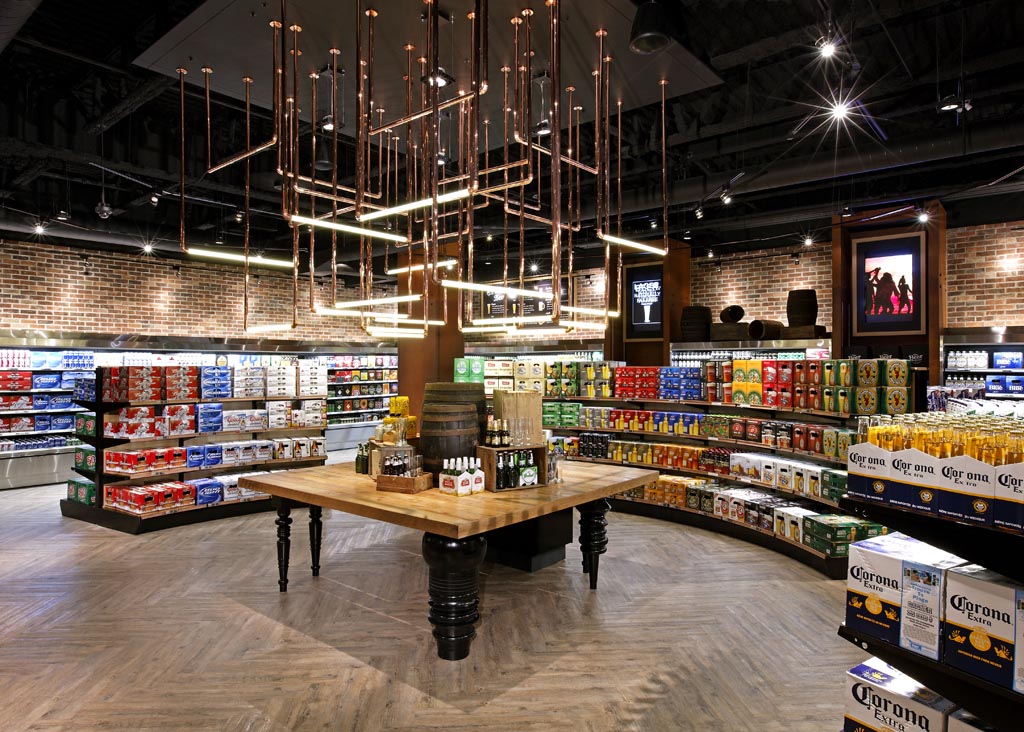
The Beer Boutique – Toronto, Canada
Large and small retail companies such as supermarkets, department stores and luxury brand retailers recreate their brand image from time to time. Smaller retail brands also must rebrand every so often to stay current. For example, a retail store may want to add a bit of sophistication by installing hardwood flooring. A luxury boutique may want the chic look of tile, but may avoid using ceramic due to the fact that it’s harder to replace.
LVT and hardwood are good retail flooring options because they come in a variety of colors, patterns, tones and wood species that can easily match a company’s brand aesthetic.
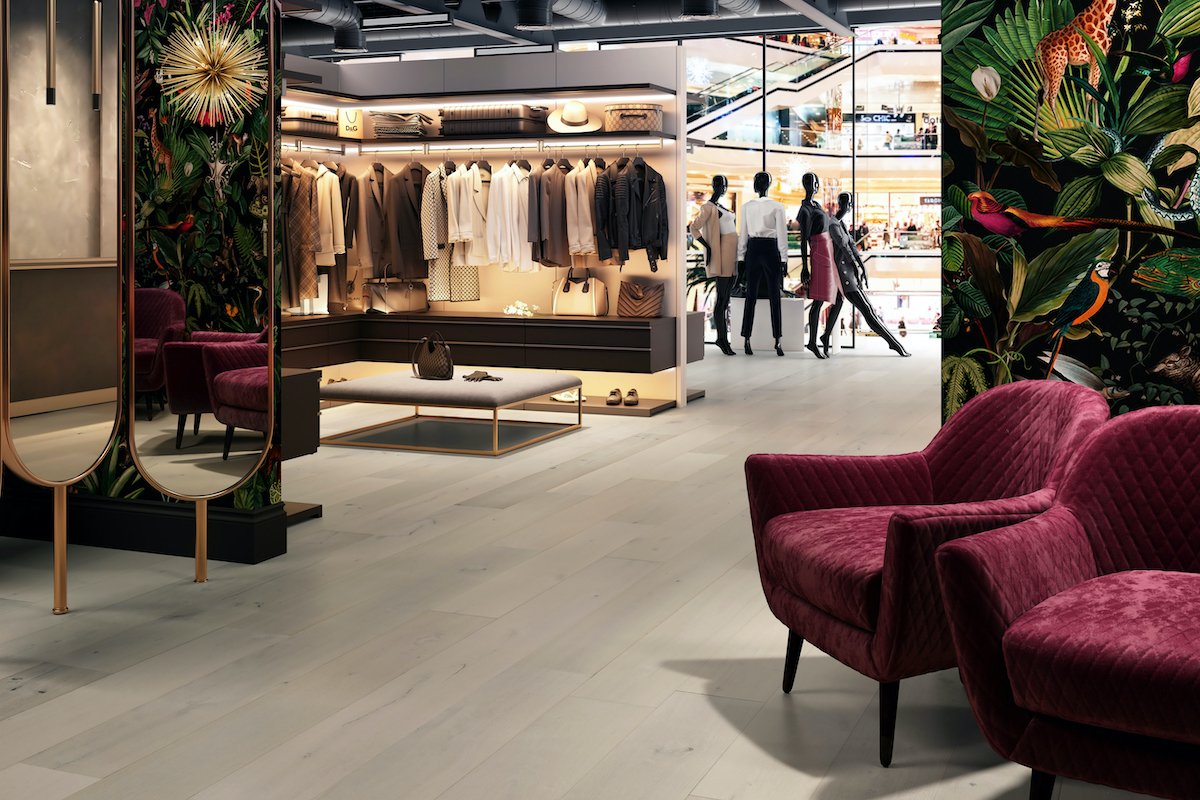
LVT and Hardwood Enhance the Shopping Experience.
When designing a retail environment it’s important to think about the path your client wants a customer to take.
A properly designed retail store interior will allow a customer to move effortlessly through the store, past end caps filled with featured products.
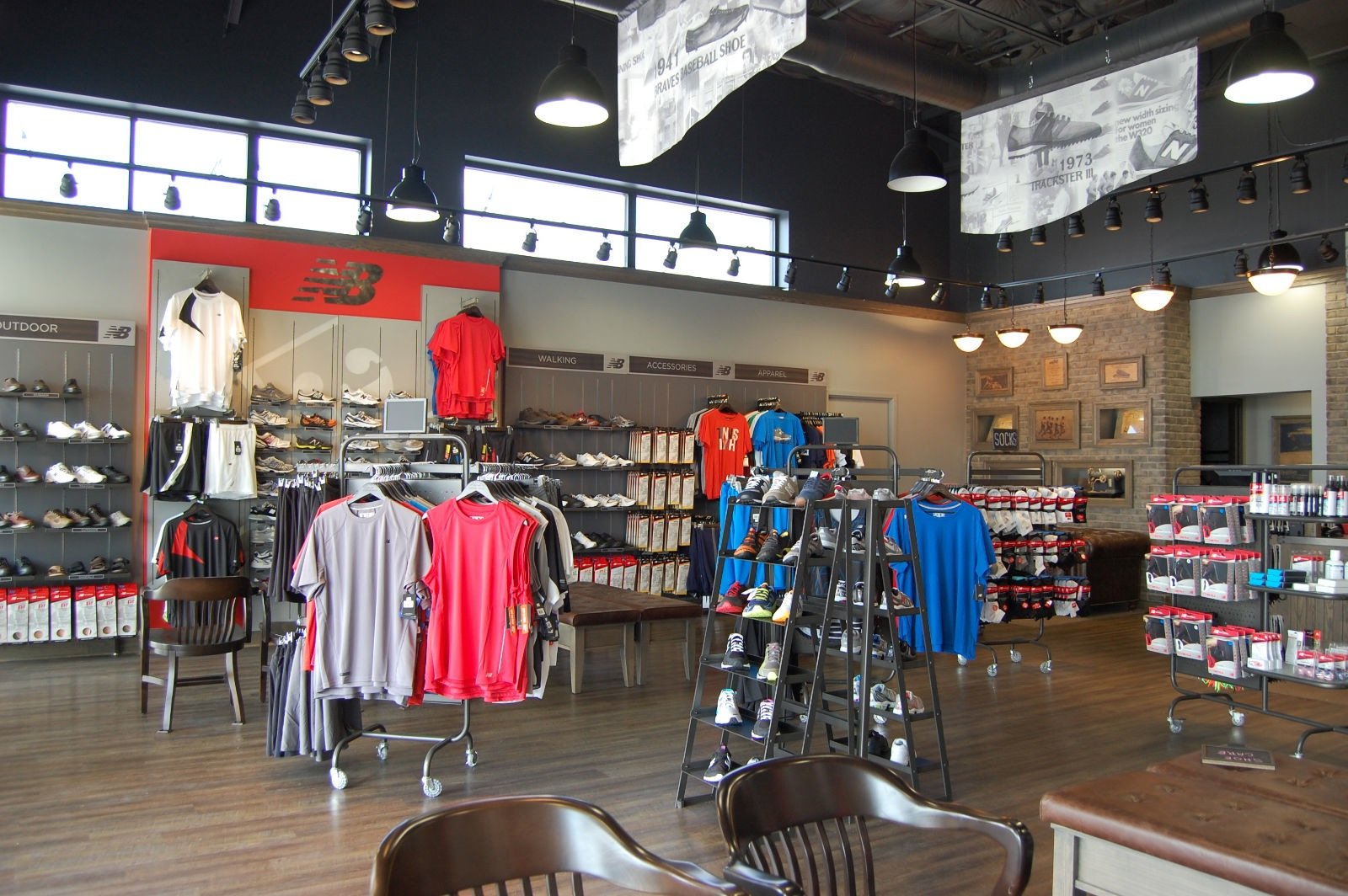
New Balance – Union Park
Not only do the variety of designs and colors allow for endless inspiration, but the ease of installation of LVT or hardwood — along with various installation pattern and layout options — creates the perfect flow to maximize a customer’s experience.
LVT and Hardwood are the Most Dependable Retail Flooring
Durability in retail flooring is critical. Your retail flooring selection should be able to stand the test of time, not to mention the stress that comes along with hundreds, if not thousands, of customers visiting on a daily basis.
Many retail stores consider ceramic floors for their durability. This decision, however, has proven costly in terms of repairs and maintenance. LVT and hardwood are the best choices when it comes to the performance of retail flooring. Both solutions are durable, dependable and cost-effective — and with proper maintenance, hardwood can even last for hundreds of years.
Real-World Examples of Retail Flooring Success
LVT and hardwood are ideal in all areas of a retail setting. Both flooring solutions work well for walkways and display areas, but also in a few other places found within retail environments. For example:
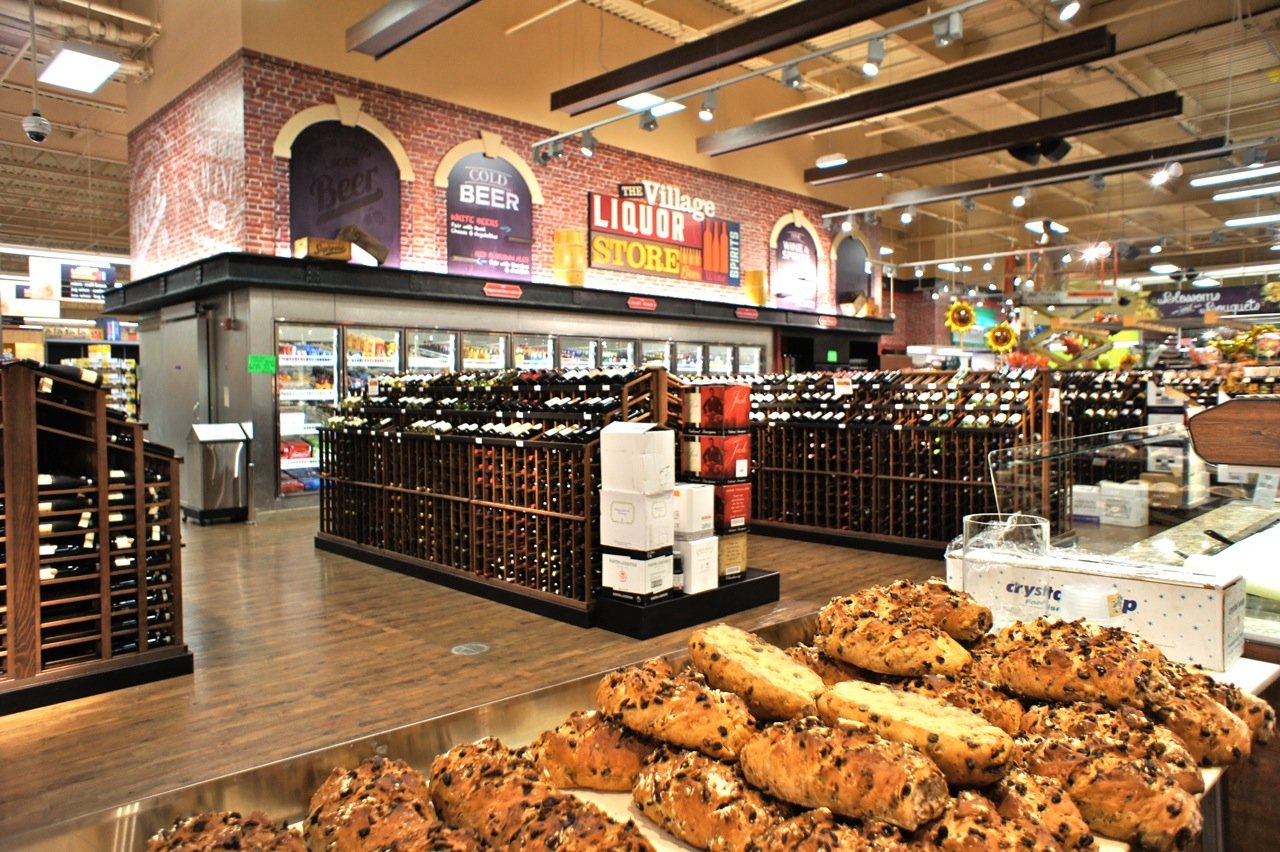
Most supermarkets feature an area in which moisture occurs quite frequently. These areas include the fish and deli counter, as well as the produce and freezer sections. LVT is ideal for these areas because of its ability to handle topical moisture on a regular basis. Like with all floors, however, moisture should be cleaned up immediately.
Hardwood is a great flooring solution for any retail space that’s looking to elevate its design and add a bit of sophistication. You can add hardwood just to a lobby or the entire floor of a retail space. Hardwood is ideal for boutique clothing stores, department stores or other specialty shops — plus, you can even pair complementary hardwood species and LVT colors together in one space.
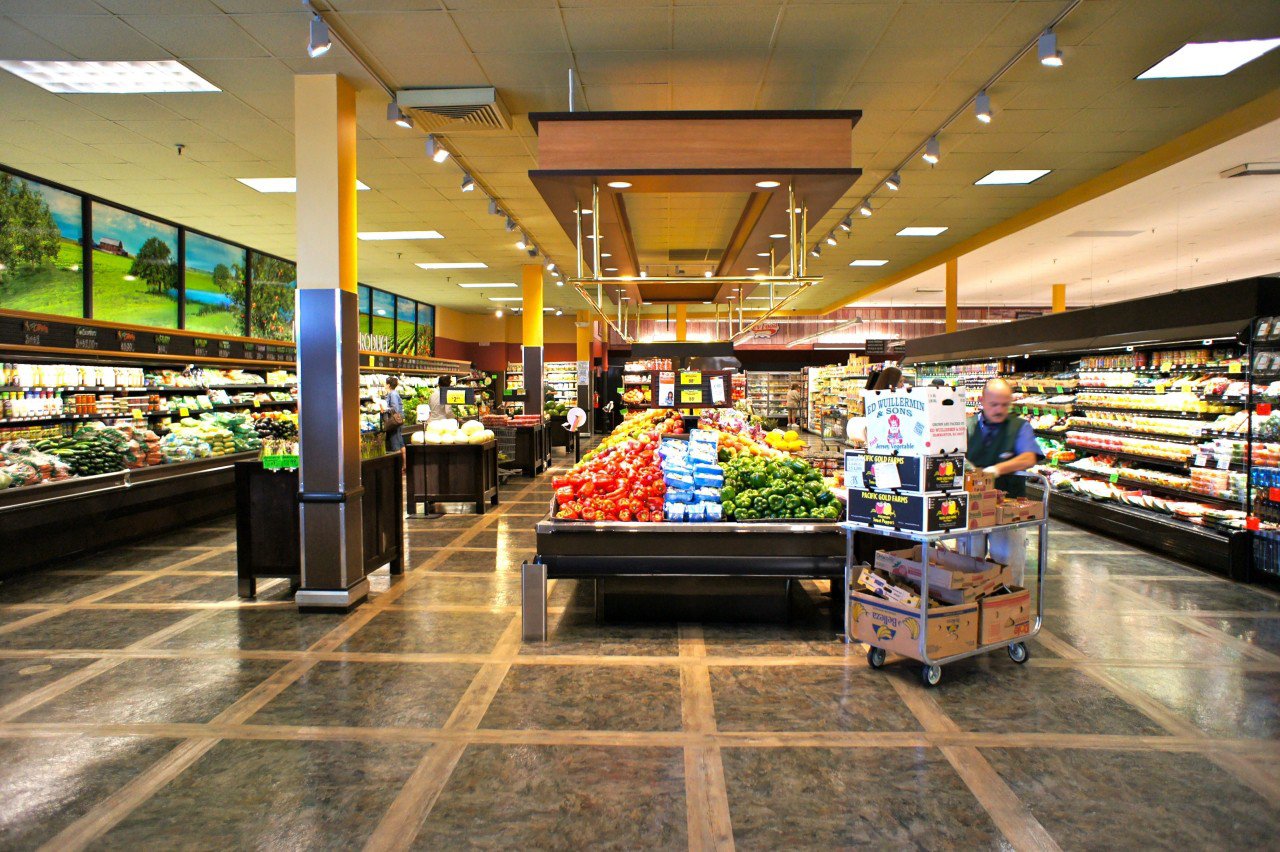
At Parterre, our philosophy on retail flooring is superior. We utilize cutting-edge manufacturing strategies that allow us to present the highest quality material with the most distinctive designs. This combination creates a product with endless possibilities.
Contact us today to learn more about our retail flooring installations with some of the biggest and best retailers in the country.
Marsha Weckenbrock Newton
Vice President Sales - West, Midwest, Canada
Sales leader with over 20+ years of expertise in the commercial flooring industry. In-depth knowledge of specifiers' (architects, designers, facility owners, etc.) needs, requirements, and concerns, and the ability to offer creative solutions to challenging opportunities.
Polished Concrete vs. Vinyl Flooring
Polished Concrete vs. Vinyl Flooring Polished concrete vs. vinyl flooring. It’s not an easy decision, considering both provide an excellent solution for commercial flooring. The look of concrete floors has been a growing trend for commercial interiors.
Chevron and Herringbone
Break the Pattern of Commercial Flooring You can add more flair to your commercial flooring by breaking from the look of traditional straight-line, square, and diagonal patterns. Eye-catching looks like chevron and herringbone will dot the designer landscape in 2024.